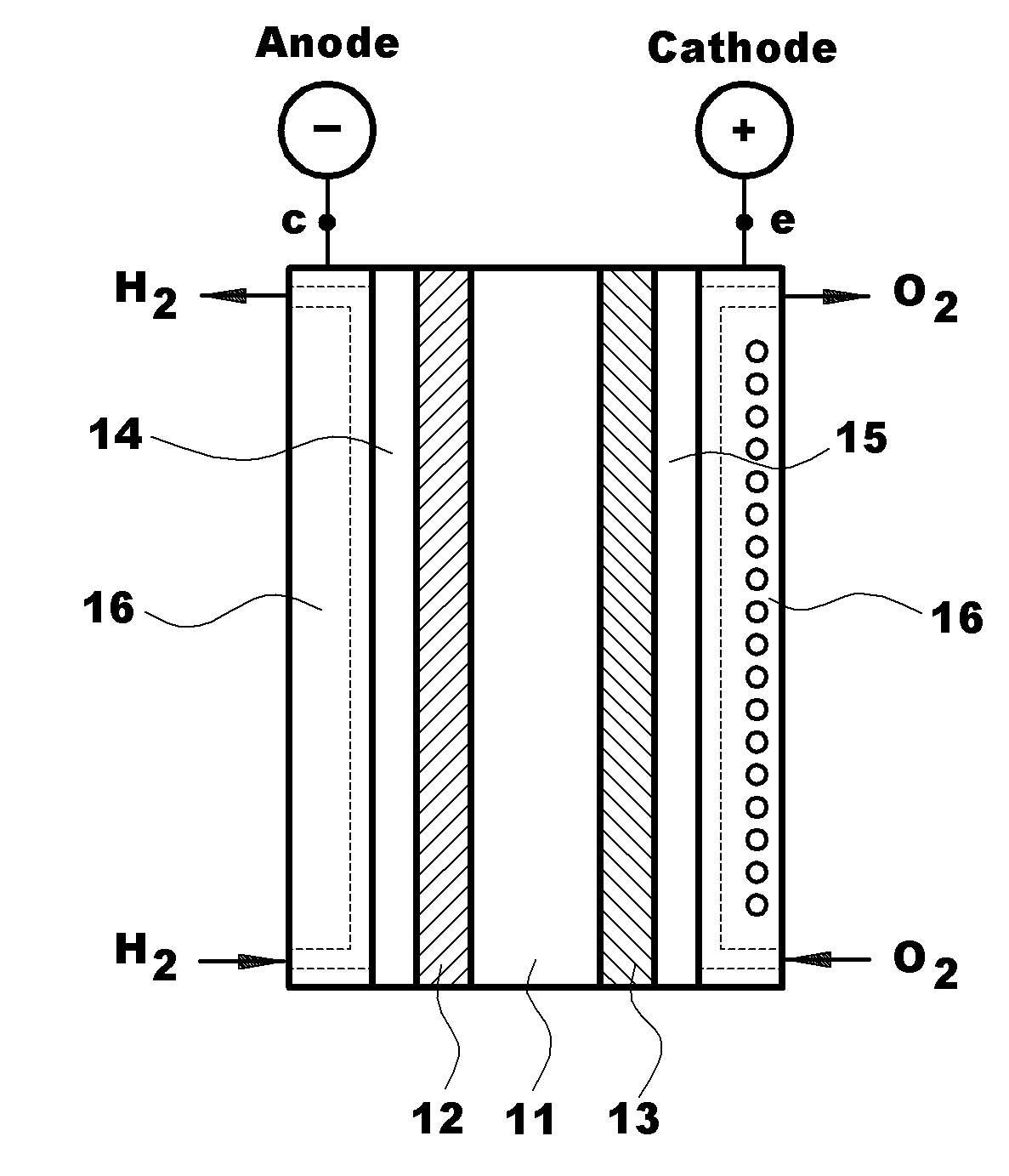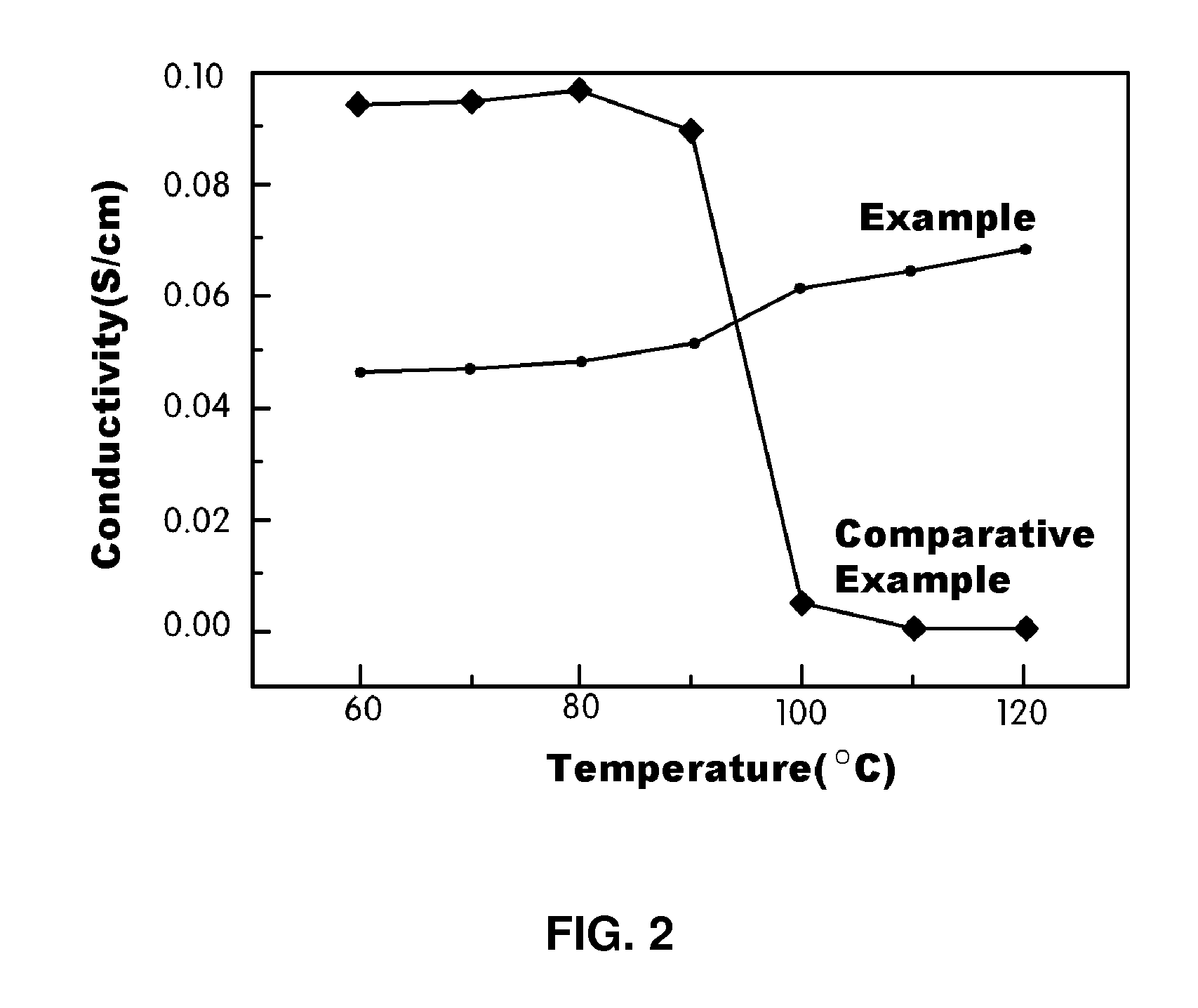Polymer blend electrolyte membrane for use at high temperature and manufacturing method thereof
a technology of electrolyte membrane and polymer blend, which is applied in the direction of sustainable manufacturing/processing, non-aqueous electrolyte cells, cell components, etc., can solve the problems of low noise pollution, inability to achieve stable proton conduction performance, and substantial discharge, etc., to achieve excellent electrochemical properties, excellent mechanical properties, excellent electrochemical properties
- Summary
- Abstract
- Description
- Claims
- Application Information
AI Technical Summary
Benefits of technology
Problems solved by technology
Method used
Image
Examples
example
Polymer Blend Electrolyte Membrane
[0087]3.16 g of Nafion 112, produced by Dupont, and 2.5 g of polydimethylsilane, were dissolved in 107 g of dimethylacetamide to prepare a solution of 5 wt % of Nafion / polydimethylsilane. 2.01 g of 3-aminopropyltriethoxysilane and 0.23 g of tetraethylorthosilicate were stirred at 80° C. for 5 hours, and then the stirred solution was added to the Nafion / polydimethylsilane solution and stirred at 80° C. for 5 hours. The stirred Nafion / polydimethylsilane / 3-aminopropyltriethoxysilane / tetraethylorthosilicate solution was cast into a film, and then maintained in an oven at 100° C. for 12 hours to evaporate the solvent, thus manufacturing a proton-conducting polymer membrane.
[0088]The manufactured membrane was boiled in an acetonitrile solution, containing 0.2 mole % of phosphoroxychloride, for 2 hours. The boiled membrane was dried, and then immersed in deionized water for 24 hours to remove the Cl group, thus manufacturing a polymer blend electrolyte mem...
PUM
| Property | Measurement | Unit |
|---|---|---|
| thickness | aaaaa | aaaaa |
| operating temperature | aaaaa | aaaaa |
| weight percent | aaaaa | aaaaa |
Abstract
Description
Claims
Application Information
 Login to View More
Login to View More - R&D
- Intellectual Property
- Life Sciences
- Materials
- Tech Scout
- Unparalleled Data Quality
- Higher Quality Content
- 60% Fewer Hallucinations
Browse by: Latest US Patents, China's latest patents, Technical Efficacy Thesaurus, Application Domain, Technology Topic, Popular Technical Reports.
© 2025 PatSnap. All rights reserved.Legal|Privacy policy|Modern Slavery Act Transparency Statement|Sitemap|About US| Contact US: help@patsnap.com



